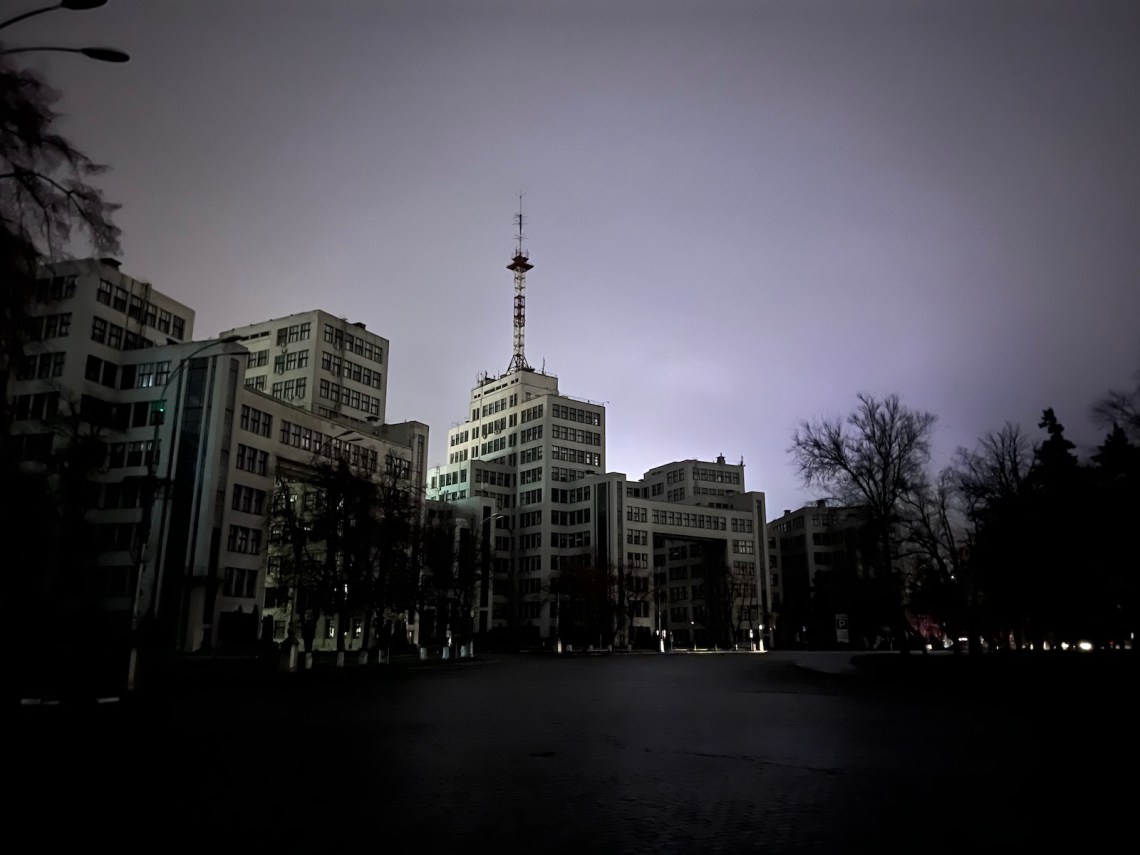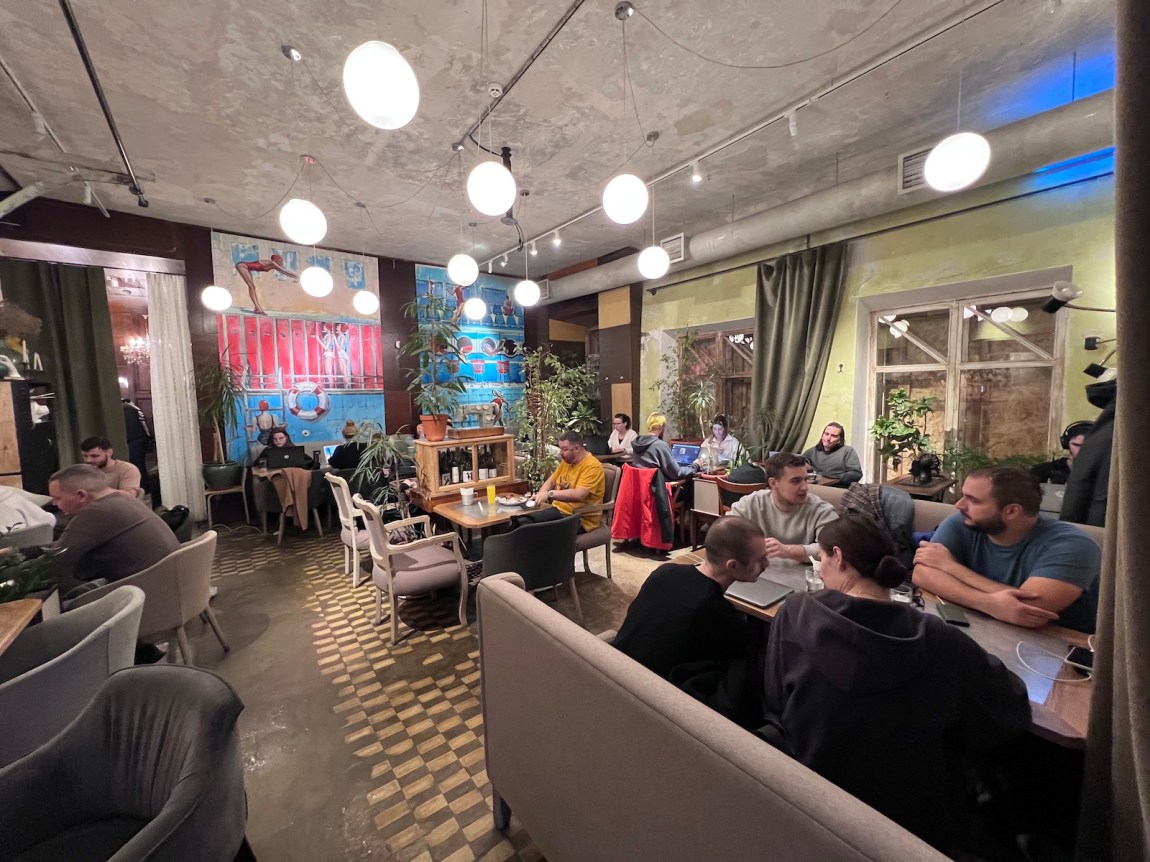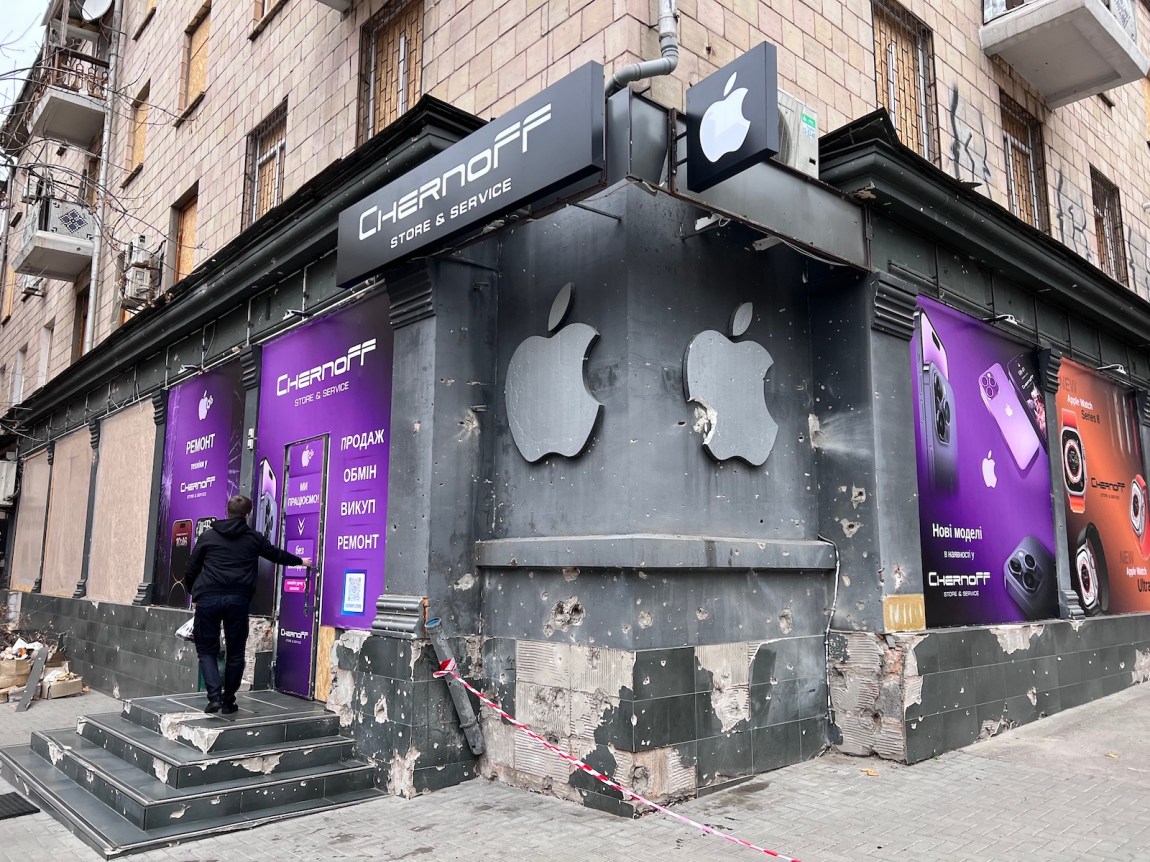It is not well understood how heavily the shadow of the violent breakup of Yugoslavia hangs over Ukraine. Vladimir Putin and his allies frequently cite the case of Kosovo, which was once Serbia’s southern province and declared independence in 2008, as a precedent for Russia’s recognition—and subsequent annexation—of Crimea in 2014 and parts of eastern Ukraine last year. Whether that parallel is valid or not is beside the point. For Putin, Russia’s failure to stop NATO’s seventy-eight-day bombardment of Serbia in 1999, as hundreds of thousands of ethnic Albanians fled Serbian forces during their war with the Kosovo Albanian guerrillas, marked the nadir of its post-Soviet collapse and humiliation. Citing Kosovo to justify his actions now is a crude form of geopolitical schadenfreude. But in thinking about Ukraine’s future, I keep returning to the postwar fate of Bosnia and Herzegovina, about which I talked with Alida Vračić, a Bosnian analyst, last June.
We were on the Adriatic island of Cres. I taped our discussion, and listening again I can hear the sea lapping gently along the shore and passing friends shouting at us. Cres changed hands during the last period in which large chunks of European territory were being shuffled from one country to another. In 1947 it was transferred from Italy to Yugoslavia; when that country disappeared, it became Croatian. On the other side of the nearby Istrian peninsula lies Trieste, which at the end of World War II became the object of a bitter dispute between Communist Yugoslavia and Western-backed Italy. In 1954 the city returned to Italian rule and the southern part of the region became Yugoslav. In the same year Crimea, which had been part of Russia, was transferred to Ukraine. Because the two Soviet republics were part of the same country, that did not much matter then. Today the question of Trieste is forgotten, but that of Crimea has risen like a zombie from the dead.
Vračić told me that she had been alarmed to hear a mutual friend in Odesa say that Ukrainian forces “would be the winners in the end, regardless of all dangers.” That “was exactly how we felt in 1992 in Bosnia.” She was fourteen then, taking shelter from Serbian shells in the basement of her home in Sarajevo. “We were listening to the radio,” she remembered, “and they were playing patriotic songs about our army being so strong and how, whenever this was over, we would be celebrating.” But thirty years later there was only bitterness. “This is what I really fear for Ukrainians,” she said:
They should really brace themselves for lots of disappointments that will come.… People who were not even necessarily in Ukraine will be the ones celebrated afterwards for the successes of the Ukrainian army. People who are not on the front lines will become rich overnight. War profiteering and all the stuff that Ukrainians don’t necessarily see at this moment will come, and these disappointments will hurt them more than the actual war.
*
You only have to google the words “Ukraine” and “reconstruction” to see that a lot of thought has already gone into postwar planning. The eye-watering sums of money currently mooted by the European Union, international financial institutions, and the governments of Ukraine and its allies would, if they came through, pay for everything from rebuilding housing and infrastructure to decarbonization. Those sums can only be notional as long as the war continues. But assuming that a very large part of Ukraine—if not all of it—remains or becomes free of the Russians, it is worth beginning to ask about the country’s future.
How you see that future depends on whether you are an optimist or a pessimist. The pessimistic view is that Ukraine will be a giant new Bosnia. If, for example, a hypothetical peace deal restored Ukraine’s borders but gave some form of autonomy to Crimea and the parts of Donetsk and Luhansk that were under de facto Russian control from 2014 and annexed last year, the country could become a seriously dysfunctional state. That is what happened in Bosnia, where decentralization and constant threats of secession by the Serb-controlled region make it difficult and sometimes impossible for the country’s fourteen different governments—which emerged as part of the deal that ended the Bosnian war in 1995—to provide their 3.2 million citizens with basic services. Every year the country’s population shrinks and ages, a trend that was already underway in pre-invasion Ukraine.
For the moment, however, most Ukrainians are optimists, buoyed by the remarkable victories of their army, which has expelled the Russians from half the territory they seized in the spring. By the sea again in November, this time in Odesa, I sat in a restaurant with Igor Tkachuk, the deputy head of Odesa’s regional administration. You can walk on the beach here, but swimming is prohibited. Last summer some who flouted the ban died when they triggered mines designed to kill Russians if they attempted a seaborne assault on the city.
Advertisement
The electricity had been off for the better part of the last two days—Odesa’s first extended outage since the beginning of the invasion. Tkachuk was telling me about plans that had been made to evacuate children and the vulnerable if missiles caused so much damage to the region’s electricity, heating, and water systems that ordinary life was no longer possible. When I asked him how much it would cost to repair the damage already done in Odesa, he said he did not know: “We will count the damage after our victory.” (Russian missiles caused a lot more harm to Odesa’s critical infrastructure in the weeks after we spoke.) Then, in exactly the type of words that worried Vračić, he told me that since the lights had gone out he had had an epiphany. “I was in the supermarket when I understood we were invincible! People were smiling and calm and there was no panic.”
Across town I met Olga Belenko, who owns the Atelier café opposite the book market. Its windows were boarded up to protect customers, many of whom were working on their laptops because they had no electricity at home, from shattering glass in the event of a missile strike. When the invasion began, she said, she had closed the café and fled to Spain. Three weeks later she told her staff to reopen it and then came home. She did so, she said, because she felt responsible for everyone who worked for her: “They need money to live.” Of the thirty people who worked for her before the invasion, twenty remain. Two joined the army and eight left the country. The number of customers was back to prewar levels, but income was 35 percent less because of inflation, which last month was running at 26.6 percent. Belenko told me that she was working on a new business idea: dried food, similar to military rations but prepared in a way that everyone might like to eat them. “This is our reality,” she said. “We can’t stop. We need new ideas. We can’t just sit and wait for help.”
*
Two hours away by car is the city of Mykolaiv, which has been bombarded by the Russians since the beginning of the invasion. If it had fallen, the road to Odesa would have been clear for the invaders. Instead they were pushed back when Ukrainian forces retook nearby Kherson in November. In Mykolaiv people were trudging about carrying large water containers, which they were filling from water trucks or buying from private suppliers. Shelling has damaged the city’s water system. Engineers have manged to keep it running by diverting into the system brackish, salty water, which cannot be drunk and corrodes pipes—they have been springing leaks everywhere—but has kept the city going, or just about.
Volodymyr Evseev, a local economist, said he estimated that only 150,000 of Mykolaiv’s pre-war population of 500,000 remained, and that only half of the region’s rich fields would be planted this year. He had formed a committee of academics and businesspeople to plan for the future. Evseev was an optimist. He told me how new technology and modernized irrigation would help resurrect the region. One tomato-growing and processing company, he said, had been among “the top producers in Europe.” The company’s production lines had been destroyed in fighting, but its officials were keen to rebuild. The income from tomato paste, they told him, yielded ten times more per hectare than the wheat, barley, and sunflower that traditionally dominate local agriculture.
And yet Evseev worried that the longer the war continued, the harder it would be to recover. It was not as though Mykolaiv did not have serious economic problems before the invasion. Like the rest of Ukraine, it already suffered from labor shortages: many people had gone abroad for better pay. It still had a skilled workforce employed in major companies like Zorya, which produces steam turbines for ships. But Zorya has been closed since the invasion began, and now those workers are idle or scattered across Ukraine and Europe. “They all just dream about returning home,” Evseev told me, but if they can’t get back to work soon, all that skill and knowledge will be lost.
Whatever its outcome, the war will make Ukraine’s catastrophically poor demographic outlook even worse. As I reported for The Economist last month, even before the war, Ukraine, along with Bosnia, was among the fastest-shrinking countries in the world: between 1991 and January 2022 its population within its 1991 borders declined by roughly 16 percent, the result of a very low fertility rate and high emigration. In the western town of Ternopil, I discussed the country’s declining population with the demographer Dmytro Shushpanov, from the Ptoukha Institute for Demography and Social Studies. Statistics about births and deaths alone show that the situation before February was “really difficult,” he told me. In 2021, although the figures were exaggerated by Covid, 442,280 more Ukrainians died than were born in government-controlled territory.
Advertisement
No one really knows how many people are left in Ukraine. The UNHCR reports that 7.9 million have fled the country, although by September some 1.2 million were reported to have come home. Because most men of fighting age are not allowed to leave, the vast majority of the refugees are women and children. The longer the war goes on, the fewer will return as they put down roots abroad, where after the war the men may join them.
Based on GDP per capita—$4,835 in 2021, according to the World Bank—Ukraine is the poorest country in Europe. But you only have to be there a short while to see that it is far richer than official statistics suggest. If the country was really so poor, most Ukrainians’ standard of living would be drastically worse than it is. Tymofiy Mylovanov, the president of the Kyiv School of Economics, thinks that if you take into account the informal economy—everything from the production of counterfeit goods to tax evasion—Ukraine’s real economy might be double the size it is on paper. But the war has also prompted Mylovanov to reevaluate his thinking about economics. GDP calculations continue to measure the same things during a war as before one, he told me, but in wartime “there is a structural shift in what people want.” Take, for example, an IT specialist who had a $200,000 salary before the invasion and is now mobilized and working in satellite communications security: “In GDP calculations it will show that we lost $200,000 of value added, but in practice he is saving lives.”
Mylovanov doesn’t think there is any prospect of Ukraine languishing for decades like Bosnia has. The dynamism Ukrainians have discovered during the war, he suspects, will pay dividends long into the future, attracting investment and encouraging members of the diaspora to return. The power of the prewar oligarchs is in abeyance and the country already has a highly diversified economy, with strengths in agriculture, tech, steel, and several other sectors. Even more importantly, Mylovanov argues that the extraordinary and unexpected course of the war since February has changed Ukraine’s place in the world. In the past it was seen as poor, corrupt, harassed, in hock to oligarchs, and attacked by Russia. Now it is seen as a “a winner country…a country of resilience, antifragility, and remarkable heroism.” It had, he told me, become “an international brand.”
—January 5, 2023





